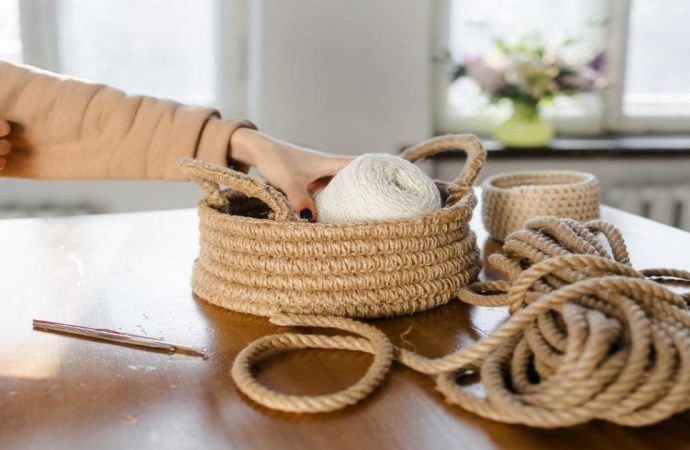As preppers know, rope and cord are valuable in survival settings as they can be used to assist in several different circumstances. However, as with other resources in a survival setting, they can run out. As a result, it is worth exploring how to make your own rope or cord that is strong and versatile
As preppers know, rope and cord are valuable in survival settings as they can be used to assist in several different circumstances. However, as with other resources in a survival setting, they can run out.
As a result, it is worth exploring how to make your own rope or cord that is strong and versatile enough to use for different tasks. This article will explore the different natural and man-made materials, as well as techniques to make it and the varies uses it will have once complete.
Best Natural Materials To Make Your Own Rope
Preppers will know that the natural environment has an abundance of materials that can be used for different tasks. This also applies to making rope and cord. Here are some suggestions for natural materials that can be used and found throughout the United Kingdom:
Inner bark from trees – it is best to use dead bark for this, however bark can be taken from living trees as long as you make sure it dries out before using for the rope or cord.
If you decided to go this route, only remove a few small strips from one tree trunk, as taking any more than this could in fact kill the tree.
Parts of fibrous plants – dried skin from the stalks as well as leaves or perhaps even dried grasses would be suitable for this. This includes both pithy plans such as milkweed and dogbane, as well as non-pithy plants like rushes and nettles.
Animal parts – animal sinew and tendons as well as rawhide can also be used for strong rope.
All of these can be found across Britain. Although using the material when dry it key, and the chance of rain in the English countryside is high, preppers can collect and dry them later in order to prepare them for use.
Best Man-Made Materials For Cord Making
Rope and cord are also manufactured using synthetic materials, either using just one material or a combination of multiple. The three most common materials are:
Polypropylene – strong and can withstand all weather conditions
Nylon – shock absorbent and has abrasion resistance
Polyester – strong, including when wet
Although the man-made materials are very strong and robust, they will not last forever in a survival setting. However, it is worth using them if you have a supply, whilst taking time to ensure that you equip yourself with the skills and knowledge to create your own later.
Twisting Techniques
Whatever materials you decide to use to when learning how to make your own rope, the methods of exactly how to turn them into a strong piece of rope or cord will be the same.
The basic principle of the twisting technique is to twist the strand that is on the left counterclockwise, then bring it over the other strands to the right in a clockwise motion.
Continue this until the strands are joined together to create the rope. This can be used for any number of strands of material, though typically 3 or 4 are used to help create a strong piece of rope of cord.
How To Do Basic Plaits
It is also possible to braid material into plaits to create strong rope. This can be done in several ways, but the easiest of which is the four-strand method.
First, make sure you have a flexible material. As the name suggests, you will need 4 strands of it. It is important the ends of each strand are fused at the end.
You can achieve this either by melting the end of the material if it is synthetic, or by simply tying it together if it is a natural material.
Then, join each strand end together so that they can be attached to each other. The easiest way to do this is to tie a knot that joins each piece together at the same end.
Using strong duct tape is also an option, although it is unlikely this will be readily available in a survival setting.
Next, take the two middle strands and cross them over. Then wrap them around each other again so they are back in the order they were at the beginning.
After, cross the first stand (the one on the left-hand side) over the second so that it is now in the middle.
Then, bring the final strand (the one on the right-hand side) underneath the one next to it, so that that is now in the middle as well. Place it so that it lies on top of the first strand that you moved in the previous step (from the left-hand side to the middle).
This constitutes as one plait. To complete the full piece of rope, repeat the process until all the material has been used.
Once you have reached the end, the braid is complete. The final step involves securing the strands at the end so that they do not unravel. The best way to wrap something around them or create a knot, and this will depend on the type of material that you are using.
Benefits Of Making Your Own Cord
Now that we have explored the materials that can be used when learning how to make your own rope, and in insight into the ways that rope and cord can be made, it makes sense to consider why you would go to this effort to make it.
Being able to make your own cord means that you can do so for a multiple of different purposes. Some examples of this include:
- Securing items together for strength and stability
- Moving large or heavy items
- As a sling or tourniquet to stop bleeding when injured
- Shelter building to secure tarps and branches
- Boat building to cross rivers
- Shelter items such as fishing line or clothing line
- To keep connected to another person when climbing
- Attaching tools to a bag to remain hands free
- Causing friction to help start fires
As a prepper, if you can learn how to make your own rope then you can make use of the materials around you and create a useful piece of gear that is suited for a wide range of tasks.
Summary
To conclude, it is evident that rope and cord are very useful in a survival setting. Although these are manufactured using synthetic materials, they can also be created using natural materials and for a range of tasks.
Being able to create your own is an invaluable skill to all preppers.





















